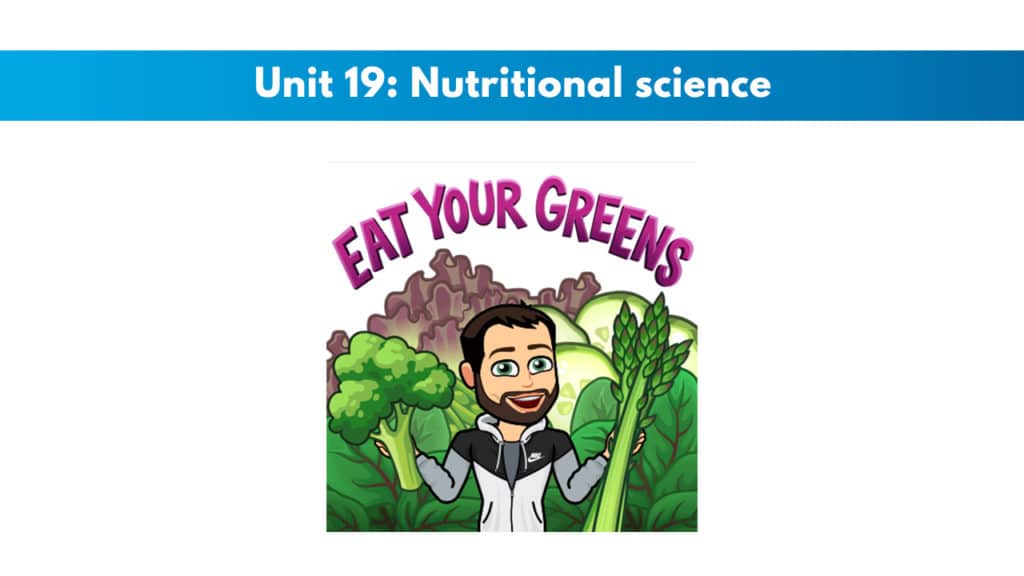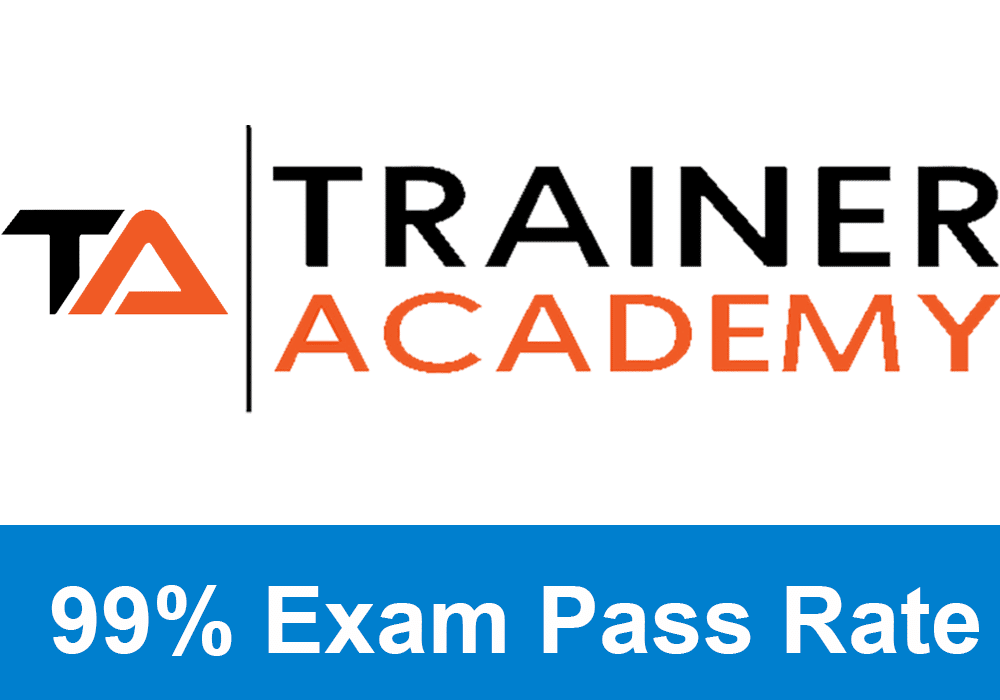
If you have not yet signed up for the ISSA CPT certification, receive a big discount here.
Get your copy of the ISSA CPT exam cheat sheet.
It helps immensely in your ability to study for the ISSA test. This PDF printable one-page sheet gives you a breakdown of the skills and knowledge candidates need to pass the exam.
My PTP students report cutting their ISSA study time and effort in half with Trainer Academy.
Benefit from the Exam Pass Guarantee and Retake Fee Guarantee. Plus, take advantage of my current discount code PTPJUNE for 45% off the MVP Program (Ends July 3rd, 2025).
Try it out for free here to see if it’s right for you, or read my detailed review for further insights.
1: What are carbs and their chemical structure?
Carbohydrates comprise numerous carbon, hydrogen, and oxygen arrangements, with a strict 2:1 ratio of hydrogen to oxygen.
2: What are the 3 basic structures of carbs?
Sugars, starches, and fibers
3: Give examples of carbs that are broken down into simple sugars in the blood
Glucose, fructose, or galactose
4: How are glucose uptake and insulin-related?
Glucose uptake is stimulated primarily by the hormone insulin.
Exclusive PTP CPT Offers |
||
|---|---|---|
Most Popular Cert | Best Online NCCA Cert | Best Study Materials |
Gold Standard Cert | A Good Option | Best CPT for you?  |
5: Minimally processed carbohydrates and overprocessed/refined carbohydrates are different in which way?
The difference is fiber content. overprocessed carbs have a low fiber content
6: How does each affect your body?
Unrefined carbs are absorbed slowly and result in managed insulin levels. refined carbs are absorbed quickly and may result in erratic energy spikes and insulin resistance
7: What are soluble and insoluble fibers?
soluble fiber can be dissolved in water, whereas insoluble fiber cannot be dissolved in this way
8: How do they function in the digestive tract?
Soluble fibers bind to bile acids, which prevents their reabsorption and can decrease serum cholesterol levels. Insoluble fibers will add bulk to stools and increase colonic transit speed. This provides several benefits: increased satiety, lowered blood fat and cholesterol, reduced risk of colon cancer, proper intestinal motility, and a boost in overall gut health.
9: What is the average daily fiber requirement for men and women?
35 grams/day for women and 48 grams/day for men.
10: Name the variable for finding the ideal carbohydrate intake for each client
Body composition, average activity levels, other macronutrient intake, unique goals, and current medical conditions.
11: What is the role of carbohydrates in the diet?
The brain and central nervous system prefer glucose for fuel and benefit from a continuously available supply. it also helps with ATP production, which is the cell’s energy currency
12: What is fat and its chemical structure?
Fats are molecules made up of carbon and hydrogen.
13: Describe with examples of saturated and unsaturated fats:
Saturated fat: Fat with no double bonds between carbon molecules saturated with hydrogen molecules.
Unsaturated fat: A fat with at least one double bond in the fatty acid chain.
14: What are fatty acids?
Any of a large group of monobasic acids, especially those found in animal tissue
15: Describe triglycerides. In what way are they broken down
A common fat in the diet. They are also the major storage molecule. the body breaks down triglycerides into 3 fatty acids and glycerol
Exclusive PTP CPT Offers |
||
|---|---|---|
Most Popular Cert | Best Online NCCA Cert | Best Study Materials |
Gold Standard Cert | A Good Option | Best CPT for you?  |
16: Describe the 6 main roles of fat in the body
It provides energy (it’s the most energy-dense macronutrient). o
lt helps manufacture and balance hormones. r
lt forms our cell membranes. r
lt forms our brains and nervous systems. o
lt helps transport fat-soluble vitamins A, D, E, and K.
lt provides two essential fatty acids that the body can’t make: linoleic acid (an omega-6 fatty acid) and linolenic acid (an omega-3 fatty acid).
17: What two dietary conditions lead to health problems with excess body fat?
Excess body fat and negative blood lipid levels.
18: Describe omega-3 fatty acids and their 3 major roles
An unsaturated fatty acid found typically in fish and plants. It occurs as alpha-linolenic acid (l[tA), docosahexaenoic acid (DHA), and eicosapentaenoic acid (EPA).
14: What are their health benefits?
These vital fats play a function in many aspects, including cardiovascular function, nervous system structure, and the immune system
15: What sorts of fats must be avoided?
Trans fats Partially hydrogenated oils, shortenings, and an excess of saturated fats
16: What examples of foods would you find these fats in?
deep-fried foods, processed foods, and mass-produced fast food
17: What is the significance of a fat diet?
provides insulation, energy, energy storage, and structural role in nerve tissue and cell membranes
18: What is protein, and what is its chemical structure?
Nitrogen-based organic molecular compounds consist of one or more amino acid chains that are vital for basic life.
19: What are amino acids, and what is their role in the body?
The building blocks of protein. They provide energy, synthesize proteins for structural and metabolic action, and are constituents of genetic material.
20: What are branched-chain amino acids (BCAAs)?
Branched-chain amino acids (BCAAs): The amino acids L-leucine, L-isoleucine, and L-valine-which have a particular molecular structure that gives them their name, comprise 35 percent of muscle tissue.
21: List each of the following categories of amino acids as per dietary requirement:
8 essential amino acids: Isoleucine, phenylalanine, lysine, methionine, leucine, threonine, valine, and tryptophan.
4 additional amino acids: Arginine, cystine, histidine, tyrosine
8 conditionally essential amino acids: Arginine, cysteine, histidine, glycine, glutamine, proline, serine, and tyrosine.
22: What is the ideal protein intake for a regular individual when participating in high-intensity training?
For generally healthy adults is 0.8 g of protein per kg of body mass. During high-intensity training or periods of low energy intake, these needs may be increased to about 1.6 to 2.0 g of protein per kg of body mass
23: Why is a protein (amino acids) significant in the diet?
Amino acids and proteins play an essential metabolic and tissue structure role
24: What are vitamins? Name the water-soluble and fat-soluble vitamins.
Organic food substances present in plants and animals are essential in small quantities for the proper functioning of every body organ and all energy production. They must be obtained through diet because the body cannot synthesize them.
25: What are minerals?
Solid chemical elements essential to many body functions and structures
26: How is water significant to the human body?
Water is an essential substance in life. It is required in almost all structures and functions to some degree and its deficiency (dehydration) poses an acute risk to life.
27: What percentage of our bodies consists of water?
60%
28: What is the ideal daily water intake?
120 lb/day.
29: What are the hazards of dehydration and hyponatremia?
Dehydration can cause death; hyponatremia can also lead to death
30: Describe 3 steps in dehydration prevention
Step 1 – Consume 1 liter of water during workouts.
Step 2 – Consume 1 liter of water after workouts.
Step 3 – Consume 1-2 cups of water at each meal.
31: Which 3 vitamins and minerals need to be supplemented in a plant-based diet and why?
Zinc, calcium, iron, vitamin D, and vitamin B12. Because these are less abundant or not naturally occurring in plant sources.
32: Which vitamins and minerals must be supplemented in a gluten-free diet?
B1, B2, B3, E, and folate, iron, and magnesium
33: What is the ideal daily intake of protein supplements?
Two servings (generally 25-50 g of protein) per day.
If you want assistance wrapping your head around this material, make sure to check out Trainer Academy for some awesome ISSA study materials. They have Practice tests, flashcards, audio study guides, and much more.

 Have a question?
Have a question? 



Tyler Read
PTPioneer Editorial Integrity
All content published on PTPioneer is checked and reviewed extensively by our staff of experienced personal trainers, nutrition coaches, and other Fitness Experts. This is to make sure that the content you are reading is fact-checked for accuracy, contains up-to-date information, and is relevant. We only add trustworthy citations that you can find at the bottom of each article. You can read more about our editorial integrity here.